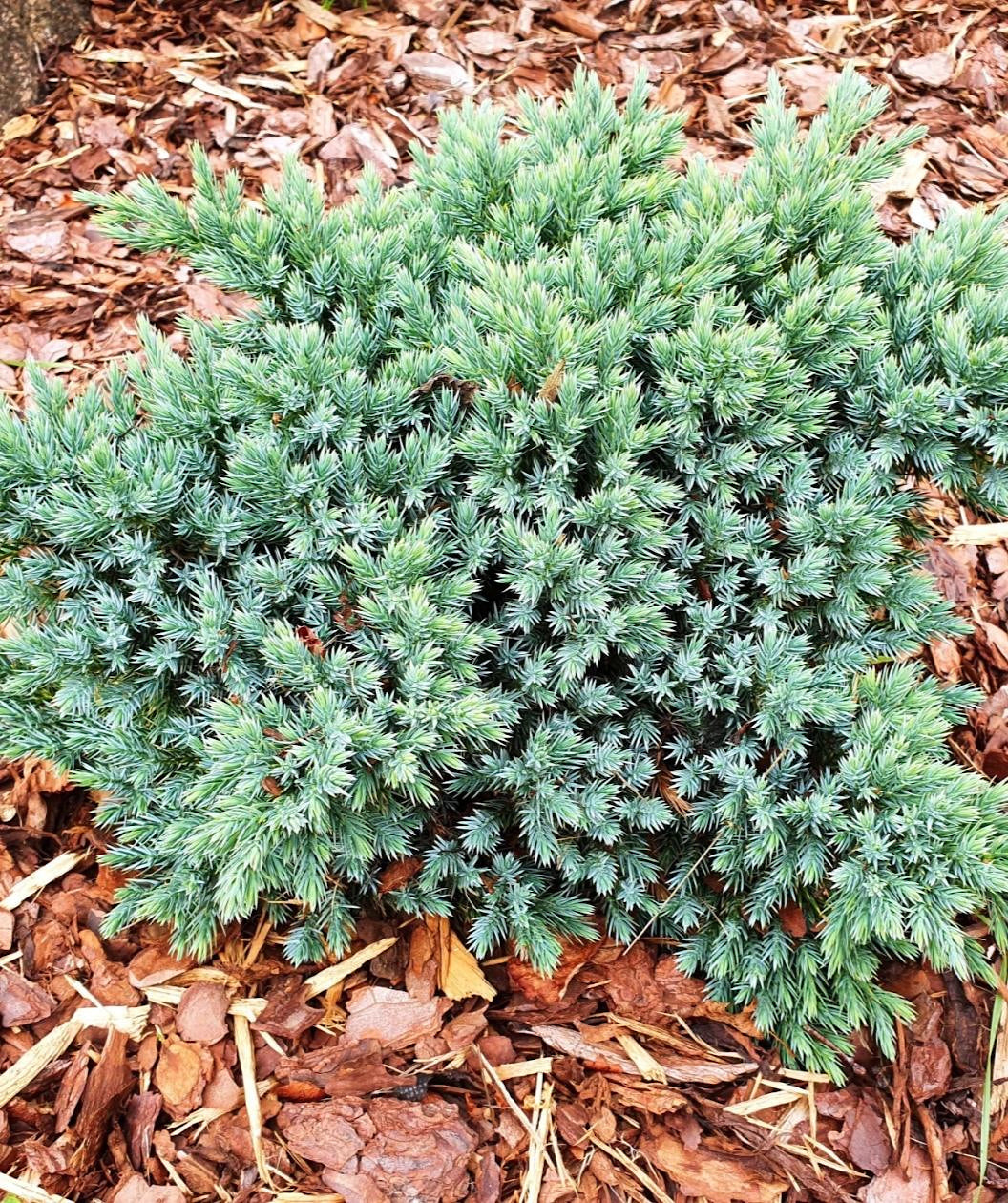



NEEDLED EVERGREEN WITH SILVERY-BLUE FOLIAGE
FEATURES:
- The rich steel-blue foliage color stands out in any setting
- Dwarf evergreen with a natural mounded habit
- Very low maintenance
- Incredibly resilient and versatile
- Provides year-round beauty
-
Hand Selected, Fresh from the Grower
- Ships in a plant-safe designed box
Photo Credit: Nova-Photo-Graphik GmbH® Blue Star Juniper
Growth Facts
- Hardiness Zone: 4-8
- Mature Height: 2-3' tall
- Mature Width: 3-4' wide
- Exposure: Full Sun
- Spacing: 2-3' apart
NEEDLED EVERGREEN WITH SILVERY-BLUE FOLIAGE
FEATURES:
- The rich steel-blue foliage color stands out in any setting
- Dwarf evergreen with a natural mounded habit
- Very low maintenance
- Incredibly resilient and versatile
- Provides year-round beauty
-
Hand Selected, Fresh from the Grower
- Ships in a plant-safe designed box
Photo Credit: Nova-Photo-Graphik GmbH® Blue Star Juniper
Growth Facts
- Hardiness Zone: 4-8
- Mature Height: 2-3' tall
- Mature Width: 3-4' wide
- Exposure: Full Sun
- Spacing: 2-3' apart
Why plant Blue Star Juniper?
Blue Star Juniper is a dapper little Accent that’s perfect for the landscape beds near your patio, front door, foundation, pool, or any of the formal areas around your home needing a spark of color. With its steely blue evergreen foliage and neat rounded shape, this nifty conifer will give you four seasons of interest while requiring hardly any maintenance. No raking leaves and little if any pruning with this one. Slow-growing and compact, Blue Star Juniper never gets out of control. You can plant it under your window without worrying about it obstructing your view.
This species of Juniper is native to China and the Himalayas, where it enjoys the cool mountain air and sharp drainage. It wasn’t known to Westerners until the early 1900s, when a plant collector for the USDA named Frank Meyer traveled to Asia on an expedition. (You might recognize his name, because he also discovered the Meyer Lemon.) Meyer did not have to hike the Himalayas to find this species—he simply bought it at a Chinese nursery and renamed it ‘Meyeri’. In 1950, a Meyeri Juniper in a Dutch nursery sprouted an extra-compact branch. Blue Star Juniper was born.
How to use Blue Star Juniper in the landscape?
Blue Star Juniper's soothing blue needles go with just about everything in the landscape. We are especially fond of it with purple or silver foliage, or with pink, orange, white, or yellow flowers.
Planting Zones
Hardiness Zone: 4-8
How To Plant Blue Star Juniper
Blue Star Juniper longs for the cool mountain air of its ancestral homeland. It will look the perkiest and live the longest in cool-summer regions like New England, but it will grow in other parts of the country, too. Just try to give it what it needs—full sun, excellent drainage, and a layer of mulch to help moderate temperatures in the root zone. Blue Star is resistant to pests and diseases, though occasionally little brown bagworm cases may appear. Simply pick them off and crush them under your heel—problem solved.
How To Water
Water your new Blue Star Juniper regularly during its first growing season to help with its establishment. Once your Juniper has been established, you can reduce how much you water. When the soil is dry about 2 inches under, then it is time to give your plant a nice drink of water.
How To Fertilize
Incorporate Elements Starter Plant Food granular form into the soil when planting. If planting in spring or summer, start fertilizing late fall using Elements Starter Plant Food granular form on an annual basis each fall. Continue this for the first three years to get your plant well established as it gives your tree the nutrients it needs to produce lush new growth for the following spring.
How To Prune
Since this Juniper has slow growth, you won't need to prune much. You can however prune away any dead or diseased branches or prune the shape to your liking.




